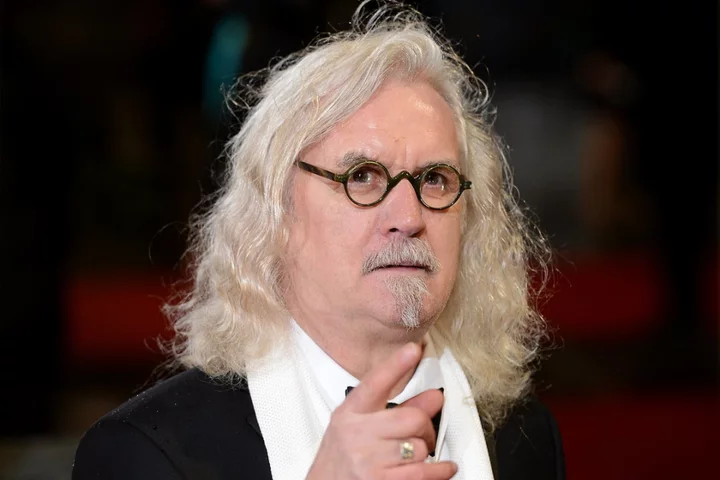
What are the symptoms of Parkinson’s disease and how can it be treated?
Parkinson’s disease is the world’s second most common neurodegenerative disorder, behind Alzheimer’s disease. While it’s unknown exactly why people develop the condition, according to Parkinson’s UK, experts believe its a combination of genetic and environmental factors that contribute to the damage of nerve cells in the brain. So what are the symptoms of Parkinson’s disease and how can it be treated? Here’s everything you need to know. What is Parkinson’s disease? Parkinson’s disease is a degenerative neurological condition. This means that over time the brain of an individual living with the disease becomes more damaged, the NHS explains. A person living with Parkinson’s disease doesn’t have enough of the chemical dopamine in their brain, the Parkinson’s Foundation states. Dopamine is responsible for transmitting signals between nerve cells in the brain. When an individual experiences a loss of nerve cells in the brain, this causes a reduction in the quantity of dopamine in the brain. What are the symptoms? The main symptoms of Parkinson’s disease include involuntary shaking (otherwise known as tremors), movement that’s slower than usual and stiffness in the muscles, the NHS outlines. Other symptoms may include difficulty balancing, nerve pain, incontinence, insomnia, excessive sweating, depression and anxiety. For more information about the symptoms of Parkinson’s disease, visit the NHS here. How many people does it affect? Around 145,000 people in the UK are affected by Parkinson’s disease, Parkinson’s UK explains. This means that around one in every 350 adults is living with the degenerative condition. According to the NHS, symptoms of Parkinson’s usually develop after the age of 50. However, for every one in 20 people affected by the disease, symptoms may appear when they’re under the age of 40. The Parkinson’s Foundation outlines that men are 1.5 more likely than women to be affected by the condition. High-profile individuals to have been diagnosed with Parkinson’s include former US president George H. W. Bush, Back to the Future star Michael J. Fox and The Chase star Paul Sinha. How can it be treated? While there is no known cure for Parkinson’s disease, symptoms may be controlled through treatment. The most common form of treatment used for the condition is medication, Parkinson’s UK states. “Drug treatments aim to increase the level of dopamine that reaches the brain and stimulate the parts of the brain where dopamine works,” the charity explains. The medication used to treat Parkinson’s disease varies according to each patient. This is because as symptoms of the disorder progress, the drugs used to treat the condition may need to be changed. While drug treatment may help to manage Parkinson’s symptoms, it cannot slow the progression of the disease. The NHS explains that those living with Parkinson’s disease may also undergo physiotherapy, occupational therapy, and, in rare cases, brain surgery to treat the condition. For more information about Parkinson’s disease, visit Parkinson’s UK. Read More What are symptoms of coronavirus – and where has it spread? Latest travel updates as coronavirus continues to spread Can face masks really protect you against coronavirus or flu? The dirty truth about washing your hands Billy Connolly shares health update on Parkinson’s disease: ‘Every day gets stranger’ Tracey Emin says she ‘totally accepted death’ following cancer diagnosis Nicky Hilton calls out critics who made negative comments about nephew Phoenix’s head
2023-11-11 21:28
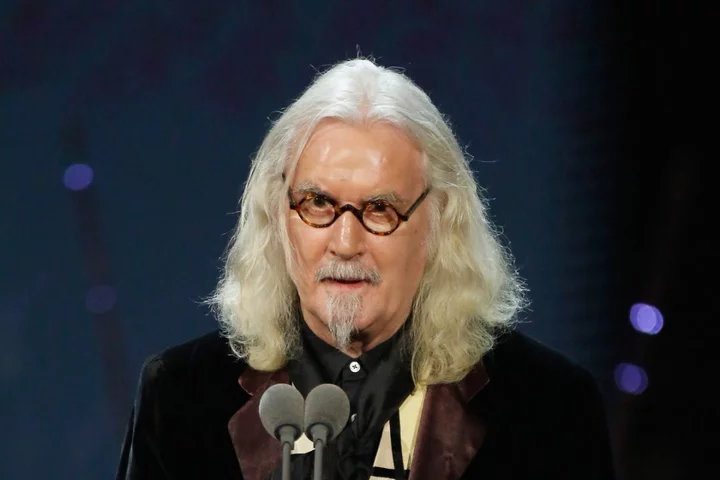
Billy Connolly shares health update on Parkinson’s disease: ‘Every day it gets stranger and more different’
Billy Connolly has said that every day spent living with Parkinson’s disease “gets stranger”, as he shared an update on his health. The Scottish actor, 80, has been living with the condition since 2013, and said that the symptoms and lifestyle impacts of the disease often “creep up” on him. Parkinson’s is a brain disorder that causes unintended or uncontrollable movements, such as shaking, stiffness, and difficulty with balance and co-ordination. Often, the disease can become more severe over time. “Every day it gets stranger and more different,” the retired stand-up comedian told The Times. Connolly said that his newfound love for making drawings, painting and sculptures has helped him navigate the mental health toll of living with the condition. “I don’t know how I would have coped without drawing. It’s taken me out of the scene and put me somewhere else, where I can survey it from a different angle,” he said. “Art has made my life magical at a time when I thought it would be unbearable.” It’s been a decade since Connolly received his Parkinson’s diagnosis. The comedian was walking through the lobby of a Los Angeles hotel in 2013 when a fellow guest, a doctor, stopped him and said he shows physical signs of Parkinsons. This prompted Connolly to visit his doctor. “I’ll never forget what he said: ‘You have the gait of a Parkinson’s man,’” Connolly told the publication. According to Parkinson’s UK, Bradykinesia, which is a common condition among people with Parkinson’s, means slowness and a reduced range of movement when walking. It can make your steps smaller and it can take more time and effort to get around. When Connolly received his official diagnosis, he was also diagnosed with prostate cancer and gallstones in the same week. “It was a helluva week,” he said. “It got funny. My daughter Scarlett was with me in the ambulance on the way to the gallbladder surgery through Manhattan. The sirens were going – nee-naw nee-naw – and she said to me, ‘Is this your first Caribbean cruise?’ That’s a line I always said to her to make her laugh when her surroundings were awkward or boring.” During an interview published in September, it was revealed that Connolly had suffered “a couple of serious falls” and once broke his hip as a result of deteriorating balance. He no longer drives. Despite these growing physical challenges, the What We Did on Our Holiday star maintains a positive outlook on his health. In his memoir, Rambling Man: Life on the Road, which was released earlier this year, Connolly clarified that he doesn’t feel “close to death”. “You see, reports of my recent demise have been greatly exaggerated,” he stated in an extract shared with The Telegraph. “There was a week a few years ago where on Monday I got hearing aids, Tuesday I got pills for heartburn, and Wednesday I received news that I had prostate cancer and Parkinson’s disease. But despite all that, I never ever felt close to dying.” Rambling Man: Life on the Road is available now. Read More What are the symptoms of Parkinson's disease and how can it be treated? Tracey Emin says she ‘totally accepted death’ following cancer diagnosis Nicky Hilton calls out critics who made negative comments about nephew Phoenix’s head What are the symptoms of Parkinson's disease and how can it be treated? Tracey Emin says she ‘totally accepted death’ following cancer diagnosis Nicky Hilton calls out critics who made negative comments about nephew Phoenix’s head
2023-11-11 21:18
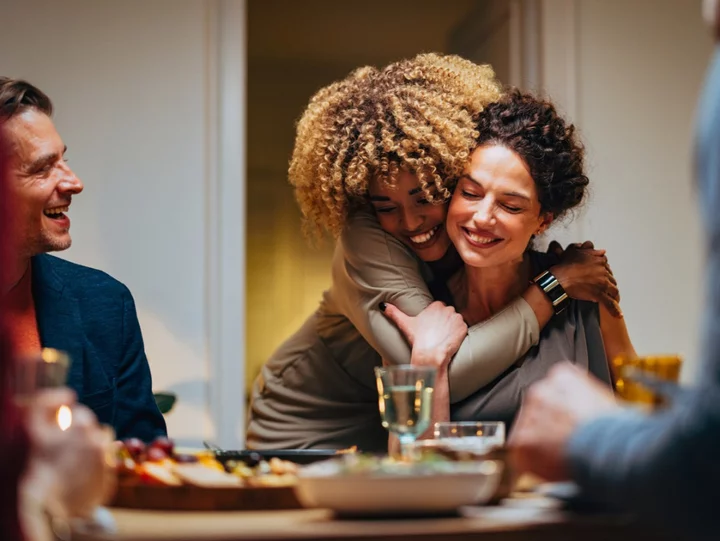
Scientists say monthly visits from family and friends can help you live longer
Scientists have found that visiting friends and family at least once a month can help you live longer. According to a recent study published by the University of Glasgow in BioMed Central Medicine, researchers discovered that there was a correlation between how often a person was visited by their family and friends with their life expectancy. Those who were never visited by their family reportedly had a higher risk of dying. Amid the ongoing loneliness epidemic, social isolation has previously been linked by researchers to a shorter life expectancy. This latest study sought to understand the effect that different types of social interaction have on our quality of life, with visits from friends and family, participating in a weekly group activity, and not living alone reportedly making the biggest difference among a group of 458,146 participants in the United Kingdom. Participants were between the ages of 37 and 73, with the average age being 56 years old, and data was collected between 2006 and 2010. Researchers asked the participants questions about the five different forms of social interaction: how often they were able to confide in someone close to them, how often they felt lonely, how often friends and family visited, how often they participated in a weekly group activity, and whether or not they lived alone. “We also tried to take into account lots of other factors that could explain the findings — like how old people were, their gender, their socioeconomic status, whether they were a smoker and more,” Dr Hamish Foster, a clinical research fellow at the University of Glasgow and the lead study author, explained to Insider. “And even after removing those factors from the equation it still showed that these social connections were important for risk of death.” Depending on when the participants were recruited, researchers would revisit the questions with the participants an estimated 12.6 years later to follow up. They reportedly found that, within those years, 33,135 or 7.2 per cent of participants died, with 5112 or 1.1 per cent passing from cardiovascular-related deaths. Strikingly, the study also found that “regardless of weekly group activity or functional components,” those who never had friends or family visit while also living alone were 77 per cent more likely to have a higher risk of death. However, Dr Foster cautions that the study is unable to take into account both the complexity and the quality of human social interactions. “Humans are really complicated and so are our connections and our measures in this study are pretty crude compared with what humans are capable of, but this study is still very detailed and is starting to drill down into how different types of connection are important,” Foster said to the outlet. He added that the study cannot prove that less socialisation causes death, but it does prove that loneliness and isolation can lead to not only poorer mental health but also poorer physical health. “We need to see more society-level interventions and support that make social connections easier, more likely, and of higher quality,” Foster added. “For example, community centers, parks, places, and activities that make it easy for people to meet and connect for high-quality relationships.” Dr Foster and his team of researchers aren’t the first to connect the dots between longer life spans and active social lives, with Netflix recently shining the spotlight on the famed blue zones - places with notably high populations of centenarians - in the docuseries, Live to 100: Secrets of the Blue. Within blue zones like Ikaria, Greece, or Okinawa, Japan, social interaction is prioritised within the community rather than being left on the backburner in favour of economic or individualistic pursuits. As the digital age and the pandemic have brought on an increase in social isolation, Dr Foster stressed that it’s important for young people to nurture their social lives and participate in their communities. Read More Blake Shelton opens up about parenting style with Gwen Stefani To shave or not to shave: How women can participate in No-Shave November Game of Thrones actor announces ‘unbearable loss’ of baby after stillbirth
2023-11-11 05:54

Trapped by a wildfire, their escape routes were blocked. Why?
A BBC investigation reveals confusion between officials as an inferno destroyed a town in Hawaii.
2023-11-11 03:49
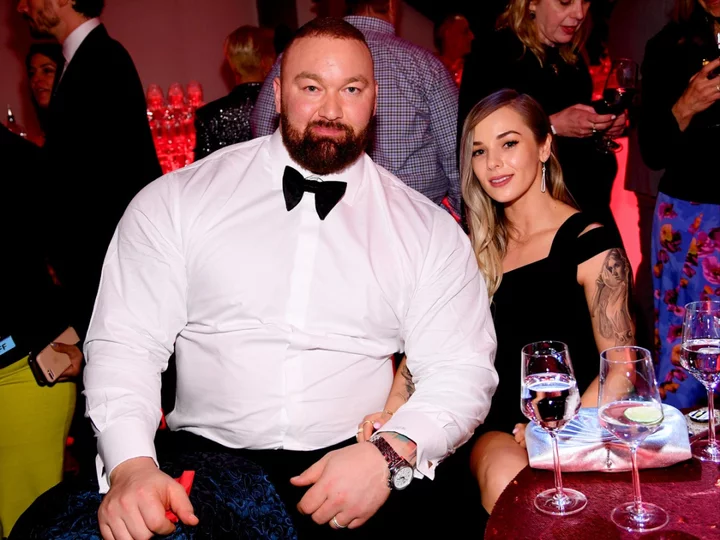
Game of Thrones star Thor Bjornsson announces ‘unbearable loss’ of baby after stillbirth
Game of Thrones star Hafþór Júlíus Björnsson has announced that he and his wife, Kelsey Henson, experienced the “unbearable loss” of a stillbirth. In a joint Instagram post shared on 10 November, the actor - known for his role as “The Mountain” in the HBO drama series - revealed that his daughter Grace Morgan Hafthorsdottir was delivered at 21 and a half weeks. “It is with great sorrow that we announce the birth of our daughter, Grace Morgan Hafthorsdottir born Nov 8th at 21 1/2 weeks gestation,” the couple captioned the post. “After a noticeable decrease in movement we found out her heart had stopped beating,” Björnsson and Henson continued. “Words cannot describe our pain of this loss or our happiness at being able to spend time with our daughter. She is absolutely beautiful, with blonde lashes and brows and a little smile for mom and dad.” “The love we feel for her is overwhelming. The grief we feel will be with us forever but so will the love. All of our hopes and dreams for her have been taken away from us but I know I will be with her again,” they added. “Her spirit lives on through us and her siblings. We ask that you respect our privacy at this time as we grieve this unbearable loss. Thank you all for any kind words and support.” Björnsson and Henson shared several photographs from the hospital, including images of baby Grace. The 34-year-old professional strongman could be seen lying with his wife in the hospital bed, as they looked down at their daughter wrapped in a white cloth. Another image showed the couple’s three-year-old son, Stormur, sitting alongside his mother and holding baby Grace. Many friends and followers took to the Instagram comments to share their condolences for the couple. “So sorry for your loss,” wrote actor Terry Crews in the comments. “My heart goes out to you both and Stormur,” said fellow athlete Martins Licis. “I’m sorry for your loss, and can’t even begin to imagine what you’re going through. May you guys find peace at whatever pace needed by your hearts.” “Thor, I am so sorry. We all love you big man,” added filmmaker Christopher Bell. In October, the pair announced they were expecting another baby with a sweet Instagram post. Their son could be seen standing in front of his parents, wearing a black T-shirt that read "brother” and holding pictures of Grace’s ultrasound. “Life is precious and I couldn’t be happier to announce that our family is growing bigger,” Björnsson captioned the post. “Kelsey is 19 weeks pregnant with a healthy child who we cannot wait to meet!” Björnsson and Henson tied the knot in October 2018 in the actor’s home country of Iceland. In addition to son Stormur, Björnsson also shares daughter Theresa Líf with ex-girlfriend Thelma Björk Steimann. Read More Nicki Minaj opens up about navigating parental anxiety after birth of her son How much water should we be drinking in a day? Irina Shayk reveals how she and Bradley Cooper make co-parenting daughter Lea ‘work’ Nicki Minaj opens up about navigating parental anxiety after birth of her son How much water should we be drinking in a day? Irina Shayk reveals how she and Bradley Cooper make co-parenting daughter Lea ‘work’
2023-11-11 02:53

Nicki Minaj opens up about navigating parental anxiety after birth of her son
Nicki Minaj has opened up about her feelings of anxiety after becoming a new mother. The rapper, 40, is the latest Vogue cover star for the magazine’s December 2023 issue. Speaking to the publication, Minaj shared many details about her ongoing motherhood journey, after she and husband Kenneth Petty welcomed their son in 2020. Minaj and Petty, who were married in 2019, were formerly high school sweethearts and grew up together in the same neighbourhood in Queens, New York. The “Superbass” singer explained how Petty was unfazed by her level of fame, and noted that he even calls her by her real name - Onika Tanya Maraj. “Because I’ve known my husband for so long, there’s an ease we have with each other,” she told Vogue. “We make each other laugh. We’re silly. And we’re always reminiscing about some old story. If it was a guy that I met as Nicki Minaj, I think I’d feel like they liked me because I’m Nicki Minaj, and what if I don’t look like Nicki Minaj every day? And that, combined with pregnancy, would probably have made me crazy.” The pair welcomed their son, who Minaj has nicknamed “Papa Bear” on social media in order to keep his privacy, on 30 September 2020. The “Barbie World” rapper admitted that she and Petty struggled with their relationship after becoming a family of three, much like many couples do when they become new parents. “I’m not going to lie, things got testy between us. Because of our history, I think we knew we’d get past it. But there’s no such thing as confidence in parenthood,” she explained, before recalling the amount of anxiety she felt after becoming a mother. “I kind of wish that someone had told me - although I’m sure I wouldn’t have been able to understand it - that there’s a level of anxiety, and you think it’s going to go away, but in fact it gets scarier,” Minaj added. “So often you think: I don’t know how to do this!” Minaj’s highly-anticipated fifth studio album, Pink Friday 2, is due for release on 8 December. The “Starships” singer previously told her millions of fans on X, formerly known as Twitter, that she had “decided to retire and have my family” just one month before she and Petty were married. However, the Grammy nominee soon realised that the studio was still calling her name - even if that meant needing to balance her family life with her professional career. “I think that deep down inside, I believed that once I had a family, I would just lose the desire to make music,” Minaj told Vogue. “I would always tell people: ‘Watch, when I have a child I’m going to cook every meal for him and bake cookies every day.’ Maybe subconsciously I hoped my focus would just be on being a mother, and I looked forward to that idea. It felt like a relief. But what happens is that you find out you have to work.” This isn’t the first time Minaj has opened up about feeling anxiety as a new mother. In an interview with E! News published in October 2022, the rapper revealed that she often feels like her “heart is being ripped out” when she is away from her now-three-year-old son. “I hate that I have more anxiety now because you’re like: ‘What if the one time I leave my child, I get that phone call?’” she said at the time. “I think moms feel like they have to be perfect.” Minaj then recalled when she was in the United Kingdom and started “bawling” over being away from her son. “And when I try to FaceTime him, I get more sad,” she said. “So, I try to hold out on FaceTiming him because to then put the phone down is so difficult.” The “Super Freaky Girl” rapper shared that she and Petty have never hired a nanny to take care of their baby. “I’m a Trinidadian woman,” she said. “Culturally, we’re not really used to nannies and strangers taking care of the babies. “It’s not a bad thing when moms do it. It’s just that I have to get conditioned. I have to get it out of my mind that it’s a weird thing, because there are tons of celebrities that are doing it and they’re raising amazing children.” Back in September 2020, Minaj announced the birth of her son by posting several photographs of handwritten notes from her celebrity friends congratulating her on the baby news. One of the pictures in the post featured a note from Beyoncé, which read: “Onika, welcome to motherhood. God bless you and your family. B.” “Thank you to Queen B, Kim & Ye, Riccardo Tisci, Winnie, Karol and everyone who sent well wishes during this time. It meant the world to me,” Minaj captioned her post. “I am so grateful and in love with my son. Madly in love. My favorite liddo boy in the whole wide world.” Read More How much water should we be drinking in a day? Irina Shayk reveals how she and Bradley Cooper make co-parenting daughter Lea ‘work’ What is silent reflux? How much water should we be drinking in a day? Irina Shayk reveals how she and Bradley Cooper make co-parenting daughter Lea ‘work’ What is silent reflux?
2023-11-10 06:18
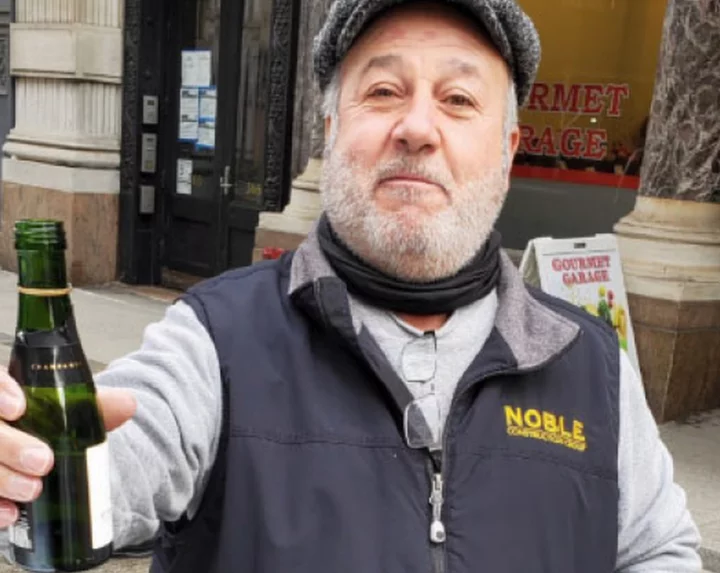
Prosecutors charge 16 alleged Gambino mafia members in US and Italy
The suspects, arrested on racketeering and other charges, are allegedly part of the Gambino crime family.
2023-11-09 05:55

Irina Shayk reveals how she and Bradley Cooper make co-parenting daughter Lea ‘work’
Irina Shayk has shared details about her co-parenting relationship with ex Bradley Cooper. The supermodel, 37, opened up about sharing custody of her six-year-old daughter, Lea, with the Silver Linings Playbook star in an interview with Elle published on 8 November. In the interview, Shayk revealed that she and Cooper always put their daughter first, despite their busy schedules. “We both take Lea everywhere with us. She’s super easy,” she told the outlet. Shayk went on to recall how her daughter sat and drew in a colouring book for an hour while she was working out. When the mother-daughter duo then went to a Michael Kors fitting, Lea drew the designer a “kitty cat” and he “gave her a bag” in return. The Russian-born model admitted that she and Cooper, who grew up outside of Philadelphia, both come from “normal backgrounds” far different from Lea’s childhood in New York City. However, Shayk revealed that neither of them have hired a nanny for their daughter, so as to give her as regular an upbringing as possible. “Looking at my daughter now, she’s growing up in a completely different environment,” Shayk said. “She lives in the West Village. She went to all these countries in two months. But we want her to know the value of stuff. We want to show our daughter: ‘You have to work hard to get something.’” Even when Cooper is away shooting a film, Shayk admitted that they “always find a way” to make their co-parenting schedule work for both of them. “He’s the best father Lea and I could dream of. It always works, but it always works because we make it work,” she said. The supermodel previously admitted in March 2021 that she “never understood” the term co-parenting. “When I’m with my daughter, I’m 100 per cent a mother, and when she’s with her dad, he’s 100 per cent her dad. Co-parenting is parenting,” she told Elle at the time. Although the former couple split in 2019 after four years together, they’ve remained close for the sake of their daughter. In August, Shayk and Cooper took their daughter on vacation together to Italy. In a post shared to her Instagram Story during their getaway, the model shared a black and white snap of The Hangover star lying in a kayak on the water. The pair also posed for a photo together on another family vacation in August 2022. In the smiling image, Shayk and Cooper could be seen smiling for the camera and feeding a group of pigs, as she rested her head on the actor’s shoulder. While Shayk has been open about her co-parenting relationship with Cooper, she was not as quick to address rumours she’s dating retired NFL star Tom Brady. “No comment,” Shayk told Elle, when asked about her rumoured love interest. The model maintained that she chooses to keep certain aspects of her life private, including who she’s dating. “I share my work stuff because I decided to keep my personal life personal,” Shayk said. “That’s why it’s called personal, because it’s something that belongs to me. If one day I feel like I want to share it, I will.” Back in July, Shayk and Brady sparked romance rumours when they were spotted together in Los Angeles. In photos obtained byPage Six, the pair were photographed in a car, with the former quarterback sitting in the driver’s seat and smiling at Shayk in the passenger’s seat. One photo also appeared to show Brady’s hand placed on Shayk’s face while they were at a stoplight. A source claimed to People that the rumoured couple “have been in touch for a few weeks” and that “there is a spark” between them. “There is an attraction, the source claimed, adding that Shayk and Brady “have never been involved romantically before”. Just last month, however, insiders told the outlet that Brady and Shayk’s rumoured relationship has “fizzled out” since the summer. “Irina was very attracted to Tom. She liked dating him. It excited her,” one source said. "They had fun travelling to see each other. In the end, it kind of just fizzled.” “They both keep having obligations, and it was getting more difficult to be in the same city at the same time,” they continued. “Irina has nothing but great things to say about Tom.” A second source added that “there’s no drama” between Brady and Shayk following the split. Meanwhile, Cooper is currently romantically linked to fellow model Gigi Hadid. The two first sparked romance rumours in early October, when they were spotted having dinner together in New York City. Cooper and Hadid, 27, were later photographed taking a stroll in the Big Apple - where the actor could be seen sporting a pair of Ellen Degeneres-branded boxers peeking above his pants waistband. Read More What is silent reflux? Salon owner with incurable cancer who lost hair in treatment makes customisable wigs Should we end daylight saving time? Doctors think it’s bad for our health What is silent reflux? Salon owner with incurable cancer who lost hair in treatment makes customisable wigs Should we end daylight saving time? Doctors think it’s bad for our health
2023-11-09 04:51
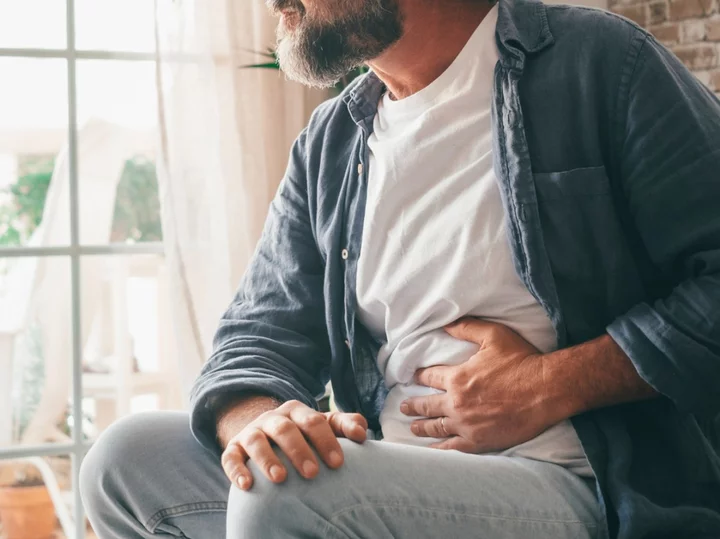
What is silent reflux?
The tendency to stuff your face with food is often met with the urgent need to settle your stomach by laying on the couch for hours, especially during the holiday season. However, what some people fail to realise is that sprawling out after a big meal may not soothe your body like you think. Silent reflux, often referred to as laryngopharyngeal reflux (LPR), can potentially be caused by “overeating and lying down just after eating”, according to the UT Southwestern Medical Centre. With Thanksgiving fast approaching, it’s important to be aware of the symptoms and signs of LPR, ensuring you aren’t inadvertently subjecting your body to the condition. UT Southwestern Medical Centre defines LPR as “a condition in which stomach acid flows back up the esophagus [swallowing tube] into the larynx [voice box] and throat.” The name is derived from the inherent form of the condition, which doesn’t cause any symptoms in the chest. When you swallow food, the contents travel down the esophagus past two sphincters, a ring-shaped muscle on the lower and upper portions of the esophagus connected to the stomach. Before the gastrointestinal system digests the food, the sphincters close so the contents aren’t able to come back up the esophagus. “If the sphincter does not close properly, acidic stomach contents can flow back into the esophagus, up to the throat and larynx,” the medical centre states. Potential causes of LPR include alcohol use, tobacco use, “certain food choices” like spicy or fried foods, obesity, overeating habits, clothing that fits tightly around the abdomen, and lying down immediately after food consumption. While the condition doesn’t evoke chest-burning symptoms like other forms of acid reflux, there are a number of other symptoms associated with LPR. Asthma, hoarseness, postnasal drip, lump sensation in the throat, bitter taste in the throat, difficulty swallowing, sore throat sensation, and burning throat sensation are all symptoms of silent reflux. “LPR can be the underlying cause of hoarseness, laryngitis, chronic throat clearing and related symptoms. You might not have typical acid reflux symptoms, like heartburn or indigestion,” the Cleveland Clinic explains. “Symptoms of acid reflux usually affect your lower esophagus, within your chest. But if you have LPR, the reflux has a habit of creeping higher up, into your larynx (voice box) and pharynx [throat].” Certain foods and beverages can cause a breach in the lower esophageal sphincter; coffee, chocolate, mint, garlic, and onions all have the potential to cause LPR. Since there is no single cause of LPR, treatments include lifestyle and diet adjustments. “Some people can solve their LPR with lifestyle adjustments alone,” Cleaveland Clinic suggests. “It takes time for LPR to heal, though, so it may be several months before you can tell if your adjustments are working.” Medications called proton pump inhibitors are also offered to help move the healing process along. Surgery is only necessary in severe cases such as “an obvious defect affecting your esophageal sphincter muscles, like a hiatal hernia,” the Cleveland Clinic states. Read More Shingles symptoms, what causes it and how to treat the virus 13 possible cancer symptoms you should get checked out Salon owner with incurable cancer who lost hair in treatment makes customisable wigs
2023-11-09 04:29
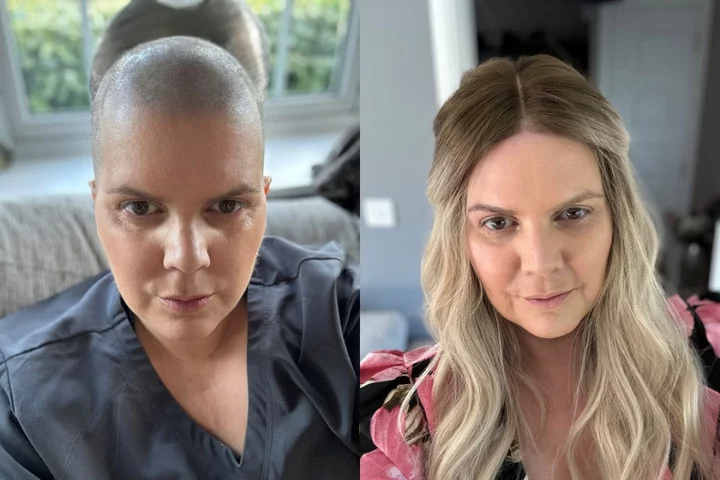
Salon owner with incurable cancer who lost hair during treatment makes customisable wigs to help others feel ‘confident’
A salon owner with incurable cervical cancer who lost her hair while having chemotherapy has said wearing wigs has given her “reassurance in a world where nothing is certain”, and she now sells handmade, customisable bespoke wigs to help others feel “confident” in their own skin. Amanda Humphrey, 43, who owns Saramanda1 hair salon in Great Denham, Bedfordshire, was diagnosed with cervical cancer in October 2017 after delaying her smear test by seven years. She underwent a radical hysterectomy in December that year – a surgical procedure to remove the womb and surrounding tissues – and was in remission weeks later. The cancer returned and Humphrey received her second cervical cancer diagnosis just two days before Christmas in 2021, and she then started chemotherapy and radiotherapy. She described this as “hell on Earth”, and within two weeks of starting chemotherapy the second time, she noticed her hair was being “blown out of [her] head” by the wind. Humphrey shaved her head and embraced her baldness but soon realised she missed having “that comfort blanket” – and she then searched “high and low” for a realistic, non-synthetic wig. Through her own searches, which were often fruitless, she realised that the number of people selling customisable wigs made of human hair in her area were few and far between. This led to Humphrey making and selling her own – and now, despite her uncertain prognosis, she said her mission is helping people struggling with hair loss feel like themselves again. “My message is I get it, and that’s why I love the wigs that we produce,” Humphrey told PA Real Life. “I’m proud of the wigs that we produce, and I’m so grateful that people choose us to be a part of their journey. “Every wig is made with love and strength, they are made from the heart, and me and my entire team, we all want them to be just perfect.” Cervical cancer is a cancer that is found anywhere in the cervix – the opening between the vagina and the womb. Symptoms include unusual vaginal bleeding, changes to vaginal discharge, pain during sex or pain in your lower back, the NHS says. Humphrey, who was working as a detective in London at the time and had only just opened her salon, said she had no symptoms prior to her diagnosis and “always found an excuse to cancel [her] smear test”. It was only when a colleague strongly encouraged her to book her smear test, seven years after she was first invited to have one, that she received her diagnosis in October 2017. She said she holds herself responsible for this and has since campaigned for other women to book their smear tests without delay by sharing the message “Don’t be me”. Speaking about her first diagnosis, she said: “I walked into the room and I looked at the consultant and, before I’d even sat down, I said ‘Have I got cancer?’ And he said ‘Yes’. “Then I said ‘Am I going to die?’ And he said, ‘I need to examine you and then I can tell you.’” Humphrey explained that telling her son, who she wishes to keep anonymous, was the hardest part, and she later underwent a radical hysterectomy, which was performed via keyhole surgery. A biopsy revealed she was in remission just weeks later, and while this was positive news she felt “lost” afterwards. She did not process the “trauma” of the cancer and the fact she could no longer get pregnant due to the radical hysterectomy until much later. “Emotionally I struggled because although I didn’t necessarily want more children, I wasn’t ready to to lose that option,” Humphrey explained. “I grieved not having more children, I grieved something I didn’t have, and I never sought help on that, ever. “Given it’s a gynaecological cancer as well, when I visit my local hospital for any appointment, I sit in a room with pregnant people waiting for their appointments. “They come out of their appointments happy, with their files and scan photos, and you’re sitting there, thinking ‘I can’t have that any more’.” In the years that followed, after Humphrey was medically retired from the police, she continued with cervical cancer awareness campaigns and focused on her salon. However, she started to experience agonising pain in her left leg in 2021 and could not pinpoint the exact source of it. After undergoing scans and tests, she was diagnosed with cervical cancer recurrence just two days before Christmas that year. She then underwent chemotherapy and radiotherapy, which caused her to experience sickness, muscle aches, nose bleeds and ulcers in her mouth. During her second round of chemotherapy she lost her hair within two weeks. “I remember saying to one of the nurses ‘The next time I see you in three weeks, will I have hair?’ And she just said ‘No’, and it was true,” Humphrey said. “I was stood outside my salon on week two and it was really windy and I was trying to make a phone call outside. “I said to my colleague ‘My hair is being blown out of my head’ – it was literally just floating past us – so we shaved it off.” Humphrey said she embraced being “bald and proud” initially, but she missed the “comfort” that having hair gave her – and so her journey to creating her own human hair wigs began. Each wig starts from approximately £450, depending on the length and thickness, and can take up to three weeks to make as Humphrey and her team at the salon custom-colour each one. Humphrey said she will often “work into the night” to finish an order, if required, and some customers have even cried when seeing the finished product. She has since partnered with Jo’s Cervical Cancer Trust as well, and for every wig sold through the charity she will donate 10 per cent of the proceeds to the organisation. She explained: “Wearing wigs has given me so much reassurance in a world where nothing is certain. “Just having a wig on gives me that comfort and ability to just be normal, and I want to help others achieve that feeling.” In October 2022, Humphrey was informed her cancer is incurable and she will most likely not reach remission again – however she is determined to keep fighting. She is now having pembrolizumab – a type of immunotherapy – and has regular check-ups, and although she was told that statistically she may only have 18 months to live, she said she wants to “prove everyone wrong, even if (she dies) trying”, and she will not stop her “passion” of making wigs for others. “The results we get are amazing, they’re happy, and being able to support someone with part of their journey is so rewarding – it’s always something I’ve wanted to do,” she said. “It helps them feel confident, and the comfort comes in, but it’s just the fact they can walk out their front door feeling normal.” She added: “If my journey can help someone in the future, then I’m all in.” To find out more about Humphrey and the wigs she and her team make, search @saramanda1_wigs on Instagram. For more information and support about cervical cancer, visit Jo’s Cervical Cancer Trust’s website here. Read More Witch achieves ‘heightened sense of fulfilment’ after self-marriage ceremony If being without your phone fills you with dread, you could have nomophobia Nursery places and wraparound childcare plans announced Is scalp exfoliation the key to healthier hair? Why do some people love horror movies? TikTok influencers warn about ‘potent’ steroid cream risks among black women – dermatologist explains the risks
2023-11-08 17:26
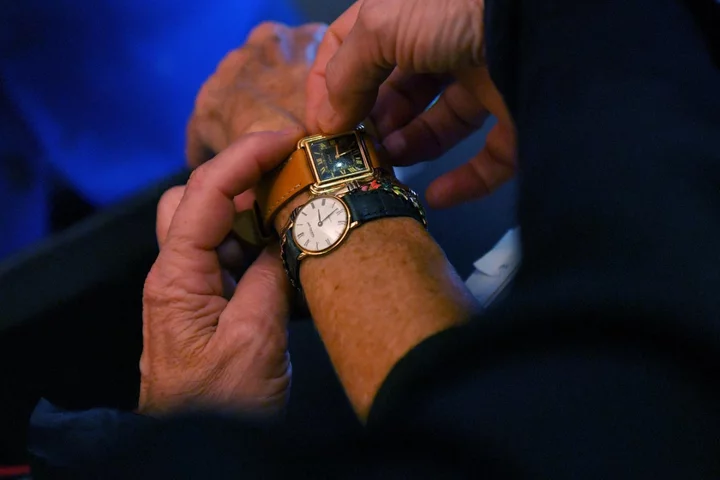
Should we end daylight saving time? Doctors think it’s bad for our health
Doctors have called for the elimination of daylight saving time citing potential harm that may result from the practice. Daylight saving time is a practice of setting the clock forward by an hour beginning on the second Sunday in March in order to use light from the sun for longer. Once winter arrives, clocks are then set backwards an hour, ending the practice around the first Sunday of November, so people can get an extra hour of sleep. Doctors from the American Academy of Sleep Medicine (AASM) called for an end to the practice, citing potential harms that can result due to changes to and from daylight saving time. Instead, they are in favour of setting standard time, which is the time when the clocks are set back in the fall, permanently. Doctors say such a permanent standard time aligns best with the human body’s natural inner clock. “By causing the human body clock to be misaligned with the natural environment, daylight saving time increases risks to our physical health, mental well-being, and public safety. Permanent standard time is the optimal choice for health and safety,” Adeel Rishi, chair of the AASM Public Safety Committee, said in a statement. AASM had previously shown in a study in 2020 that Daylight Saving Time (DST) is linked to “increased risks of motor vehicle accidents, cardiovascular events, and mood disturbances” as people annually “spring forward” to adopt the practice. Previous research has also found that pushing the clock back an hour can impact mental health. An analysis of data from more than 185,000 Danish people found an over 10 per cent rise in depressive episodes during the shift from summer time to standard time. The position to end DST is also supported by previous statements adopted by organisations such as National Sleep Foundation and the American Medical Association. “Permanent standard time helps synchronize the body clock with the rising and setting of the sun. This natural synchrony is optimal for healthy sleep, and sleep is essential for health, mood, performance, and safety,” James A Rowley, president of the AASM, said. However, the US Senate has passed The Sunshine Protection Act in March 2022, which would make US daylight saving time permanent. But this bill still requires approval by the House and president Joe Biden to be coded into law. Read More Here’s what a sleep expert says about the time change as clocks change in US Daylight saving time 2023: When do the clocks go back in the US? This is what changing the clocks can do to your health Mother of newborn triplets shares how they react differently after eating Stephen Fry uses walking stick after breaking his leg, pelvis and ‘a bunch of ribs’ Mother’s song about how easy it is to be ‘such a good dad’ goes viral
2023-11-08 06:55

Gaza journalist killed alongside 42 relatives, news agency says
Mohammad Abu Hasira's death comes as a watchdog says the past month has been the most deadly for journalists.
2023-11-08 03:53
